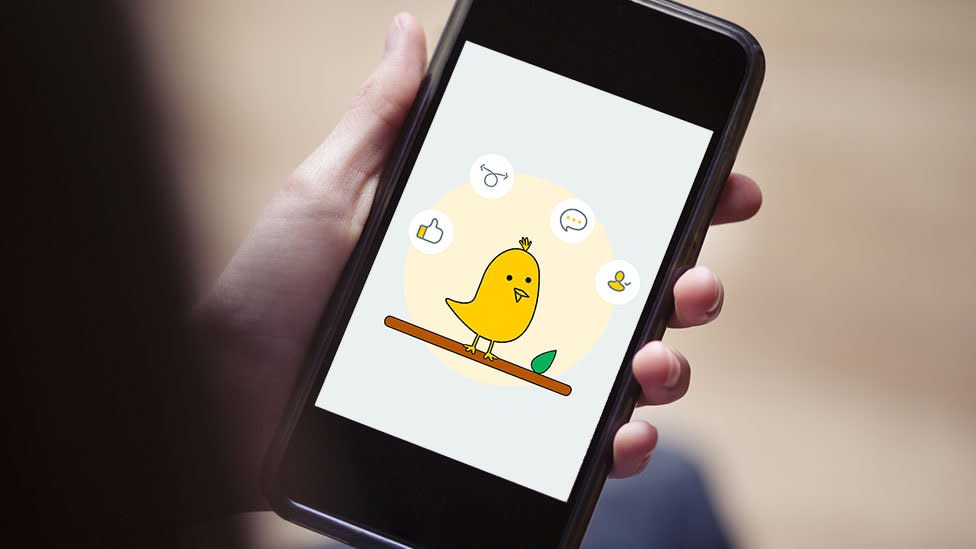
A little yellow chick is gaining prominence in India due to tensions between Twitter and the Indian government.
Koo, a new microblogging app, is being used by government agencies in place of its much larger US-based rival.
Twitter’s ‘double standards’
The Indian government had demanded that Twitter remove certain accounts that it claimed were spreading fake news.
It accused Twitter of “double standards” by acting against those accused of spreading false or misleading information during the siege of the Capitol building, but not those who acted similarly during protests in the Red Fort in Delhi on January 26.
Twitter initially complied, but then reversed its decision and restored suspended accounts.
The lists of accounts the government wanted to block include those of journalists, news organizations and opposition politicians.
Meanwhile, supporters of the Indian government, including politicians from the ruling party, have voted with their fingers and used Koo’s new platform to voice their views. They have also shared hashtags calling for a ban on Twitter in India.
What can Koo do?
Koo’s particular appeal for Indian microbloggers is that it currently operates in five national languages, as well as English, with plans to introduce 12 more.
It was launched last March and has received an award from the Indian government, which is seeking to push for greater self-reliance.
Koo works in a similar fashion to Twitter, claiming it has been downloaded three million times since launch, a third of which are described as active users.
Who are the financiers of Koo?
Earlier this month, Koo’s parent company, Bangalore-based Bombinate Technologies, raised $ 4.1 million (£ 3 million) in funding for the project.
One of the main funders is Mohandas Pai, known in India as the co-founder of the IT giant Infosys and an outspoken supporter of the BJP-led government of India.
With its ‘made in India’ push, many Twitter users had pointed out that it also had Chinese support.
But Koo CEO Aprameya Radhakrishna says that while investments were made in China early on, this was no longer the case.

Is Koo India’s Parler?
With several ministers and BJP supporters putting their backs on the India-made app, many have drawn parallels to the US-based social media app, Parler.
Parler positioned itself as a platform for ‘free speech’ and quickly became popular with supporters of former US President Donald Trump, as well as conspiracy theory groups such as QAnon, many of whom had become disappointed with Twitter.
Twitter’s loss is Koo’s gain as several Indian ministers and government departments, as well as some celebrities, have created accounts.
Many of their supporters and followers have also followed them to the new app.
Recently, India’s electronics and information technology minister, Ravi Shankar Prasad, said he now had more than 500,000 followers on the app. His ministry’s account has won more than 160,000 in recent days.
“We are humbled and at the same time excited by the adoption and encouragement by so many notable personalities, and recently the entry of the country’s top government offices to Koo,” said Mr Radhakrishna in a statement.




Last month, a local television station, Republic TV, announced an editorial partnership with Koo.
It claims to be India’s most watched channel but is under scrutiny for its partiality towards the BJP.
Many of the most popular posts on Koo are featured on the channel, and trending hashtags are promoted in TV shows.




Some have suggested similarities with the Chinese social messaging app Weibo due to its close relationship with the government and its supporters.
Digital activist Nikhil Pahwa says India’s self-reliance goes against the trend towards global platforms: “I fear there may be a future in India where no global platforms operate.”
Mr Pahwa is also concerned that the lack of effective content moderation opens the door to extreme views, as on every social media platform “there is a tremendous amount of hate speech, even under real names and verified IDs”.
Koo and Parler aren’t the only apps that have emerged as competitors to Twitter. Other platforms such as Mastodon and Tooter have also emerged but have failed to get off the ground or build a loyal user base.
Mastodon gained popularity in India in 2019, when the account of a prominent Indian lawyer was shelved by Twitter.
Many Indian liberals migrated to it at the time, accusing Twitter of arbitrarily blocking the account without providing an explanation.
But most of those who left eventually returned to Twitter.
“No one has been able to reach the scale of Twitter,” said Pahwa, “because it gives us access to news and information from a global base of users.”




Read more about Reality Check
Send us your questions
